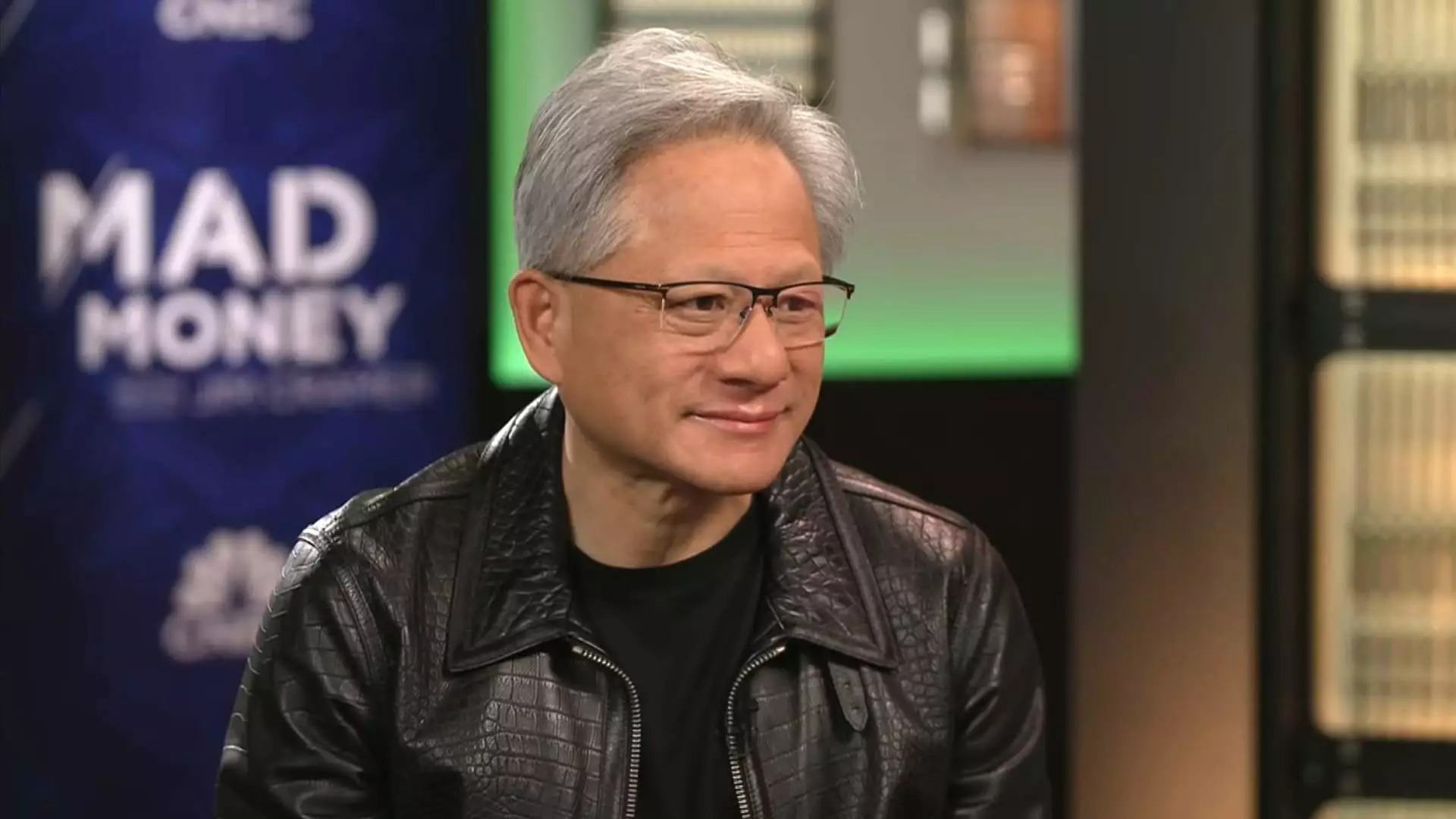Nvidia’s CEO Jensen Huang has taken a seemingly optimistic stance regarding the economic fallout from President Trump’s tariffs. He insists that the impact will be minimal in the short run, yet this perspective can be dangerously naive. Huang’s assertion that “there’s a lot of AI to build” does not erase the reality that tariffs can ripple through supply chains, escalate costs, and ultimately stifle innovation. When we examine his remarks, it becomes evident that optimism without a sober assessment of economic realities can lead to significant miscalculations.
The Trade War’s Hidden Consequences
The trade war initiated by the Trump administration is not simply a political maneuver; it carries tangible consequences for businesses reliant on global supply chains. Huang’s enthusiasm for building in America may sound reassuring, but it glosses over the immediate fallout from these tariffs, including retaliatory actions from other countries. Tariffs can incite a tit-for-tat backlash from trading partners like China and Mexico, and these escalating tensions can disrupt Nvidia’s plans for expansion and innovation. Companies like Nvidia cannot operate in a vacuum, and Huang’s dismissal of the short-term risks associated with trade barriers appears overly optimistic.
Manufacturing Dreams Versus Economic Reality
While Huang is optimistic about onshoring manufacturing, the realities of U.S. labor costs, infrastructure, and regulatory hurdles complicate these aspirations. Collaborations with partners like TSMC, Foxconn, and Wistron are commendable, but establishing a robust manufacturing presence in the U.S. is fraught with challenges. High labor costs and stringent environmental regulations in the U.S. might counteract the financial viability of moving production onshore. Huang’s comments reflect a hopeful vision that may not align with practical economic considerations, which could deter genuine progress towards this goal.
Market Dynamics and Competitive Pressures
The rattle of Nvidia’s stock, which has seen a significant drop, underscores a broader dilemma that Huang seems to underestimate. The company’s dominance in the graphics processing unit (GPU) market is being threatened by emerging competitors, notably from China’s AI sector. Though Huang is quick to dismiss concerns about companies like DeepSeek, the potential for emerging firms to undercut Nvidia’s technological advantage is very real. The competitive landscape is shifting rapidly, and an overly optimistic approach may blind executives to the looming challenges that could impact the company’s market position.
The Reality Check from Export Controls
Lastly, Huang’s disregard for the ramifications of U.S. export controls on technology to China highlights a troubling disconnect. Nvidia’s revenue from China has been halved due to these restrictions, illustrating that geopolitical tensions can have immediate financial consequences. As the Biden administration tightens export controls, companies like Nvidia may find themselves boxed into a corner, forced to reconsider their global strategies. Huang’s focus on domestic growth is commendable, yet it must be rooted in an understanding that global interdependence and competition cannot simply be ignored.
By evaluating these aspects critically, it becomes evident that Huang’s upbeat projection fails to account for the broader economic and competitive landscape that Nvidia navigates. The allure of AI cannot overshadow the harsh realities posed by tariffs and geopolitical tensions; a more balanced assessment is essential for sustainable business practices.

Leave a Reply